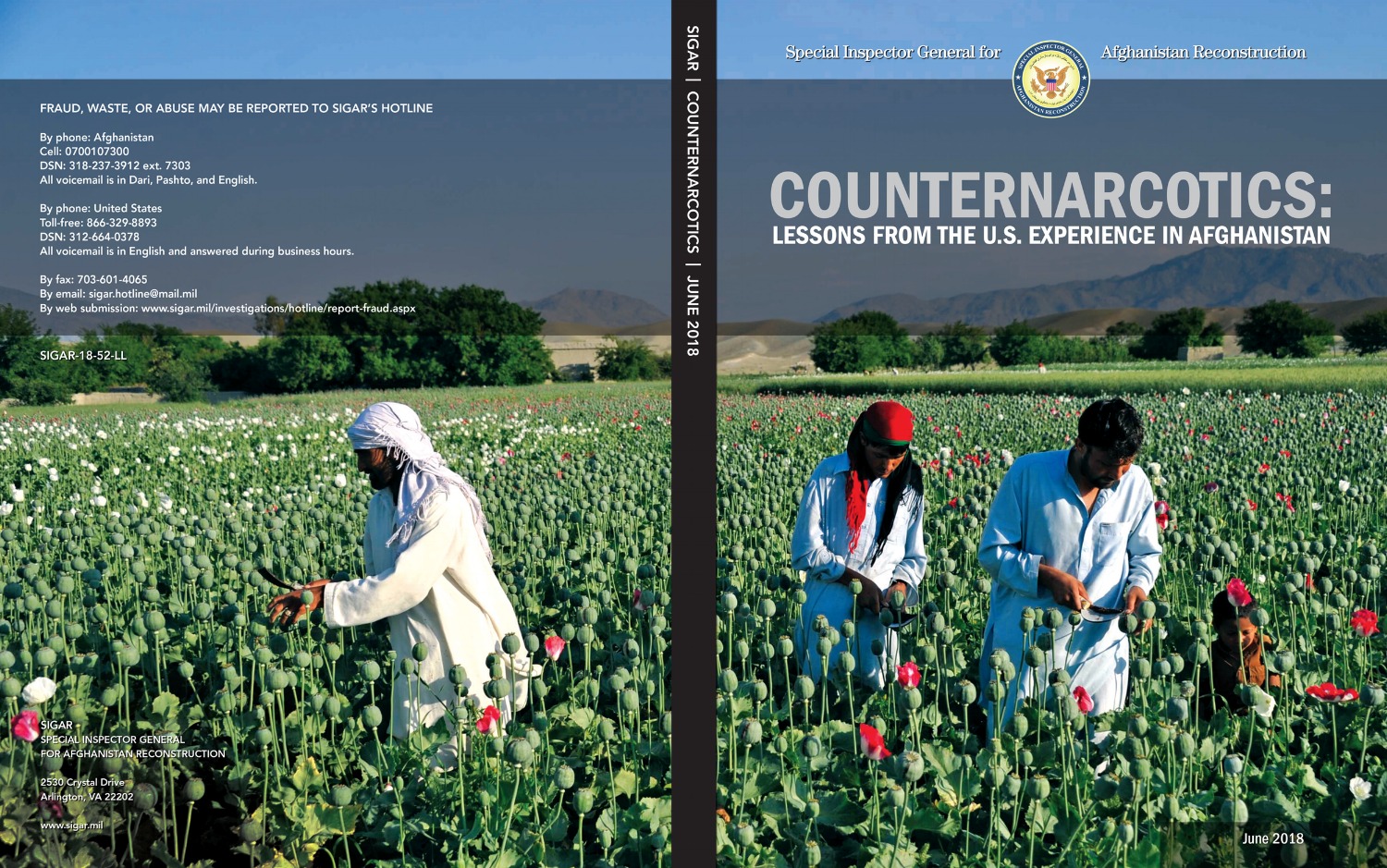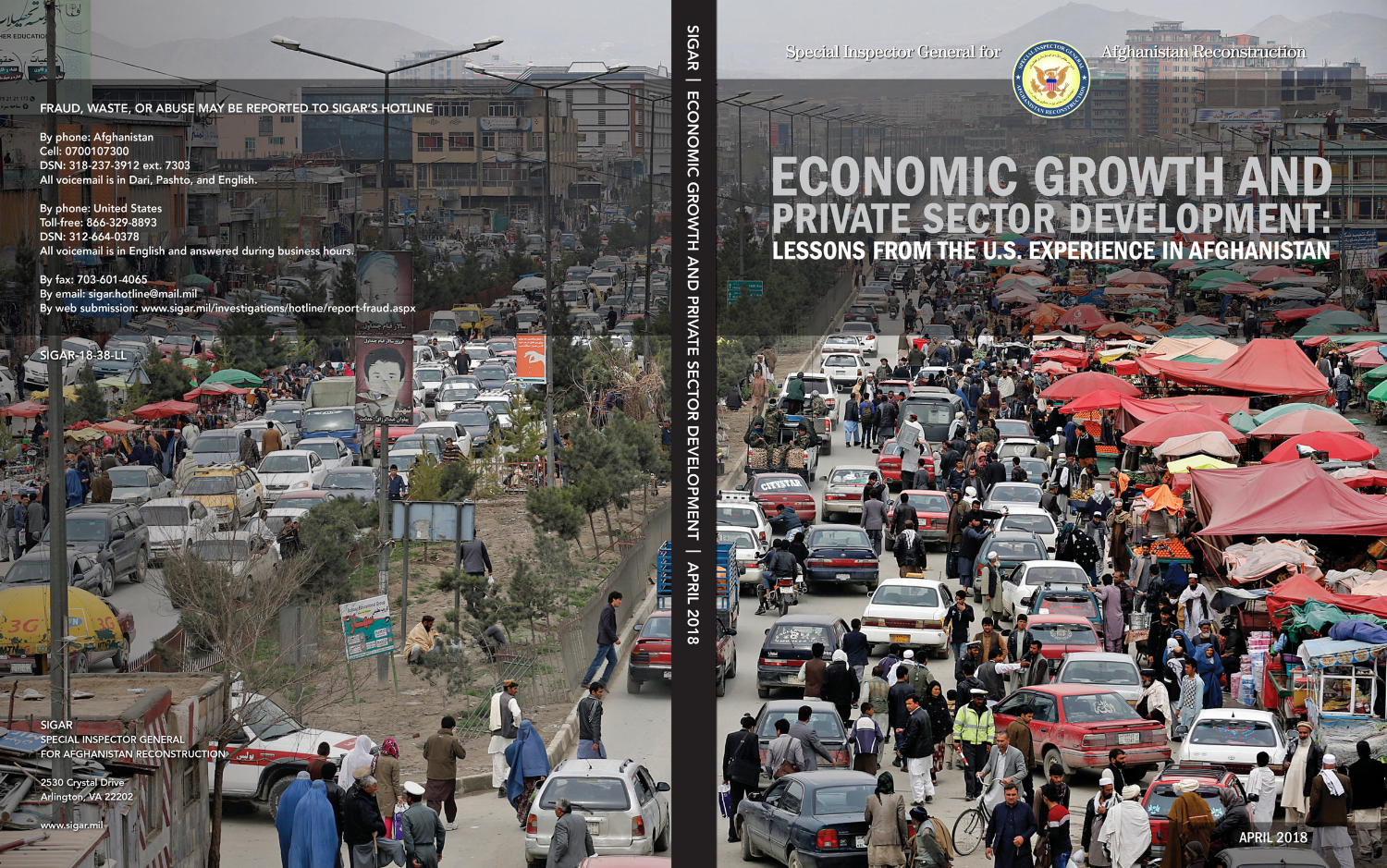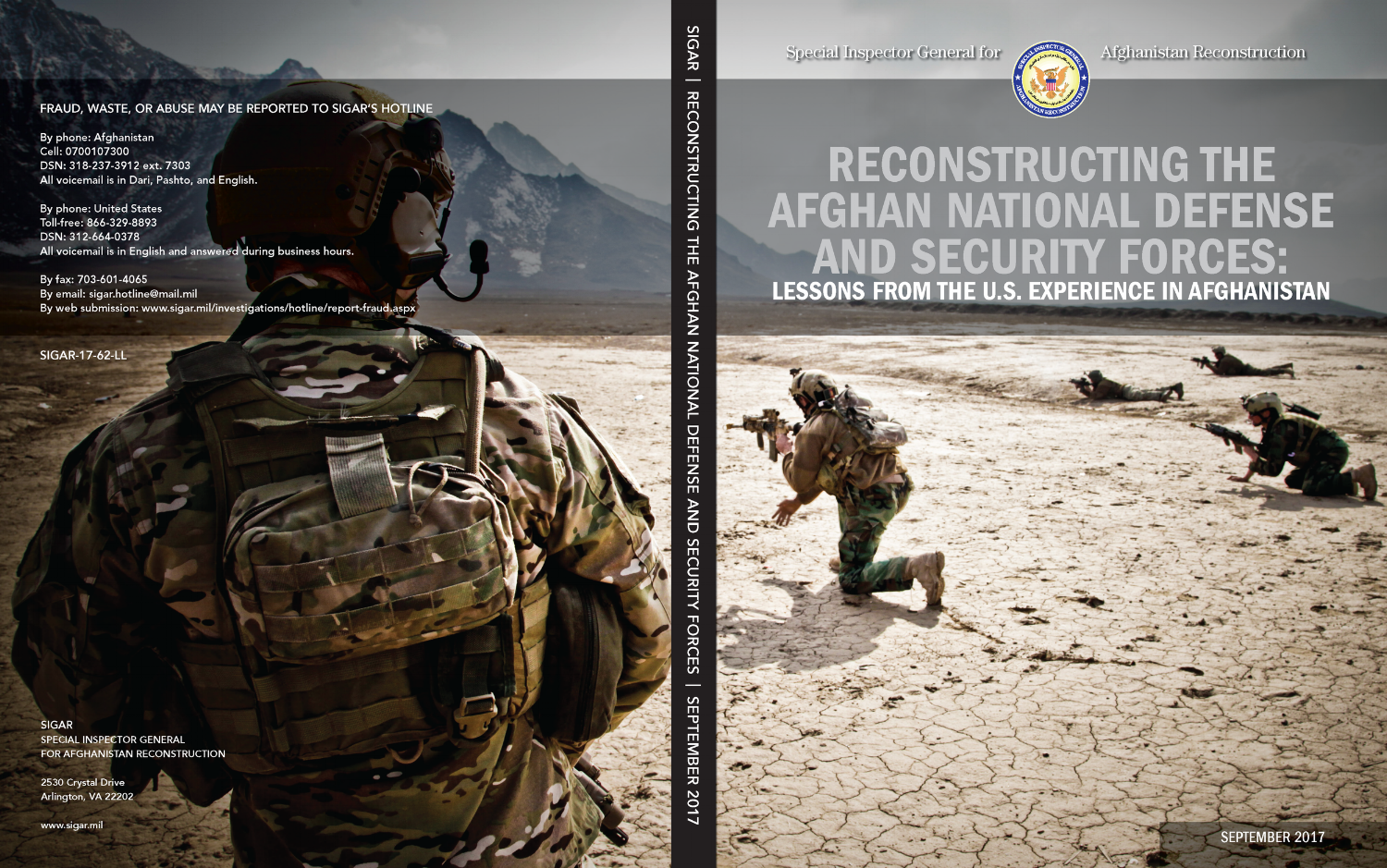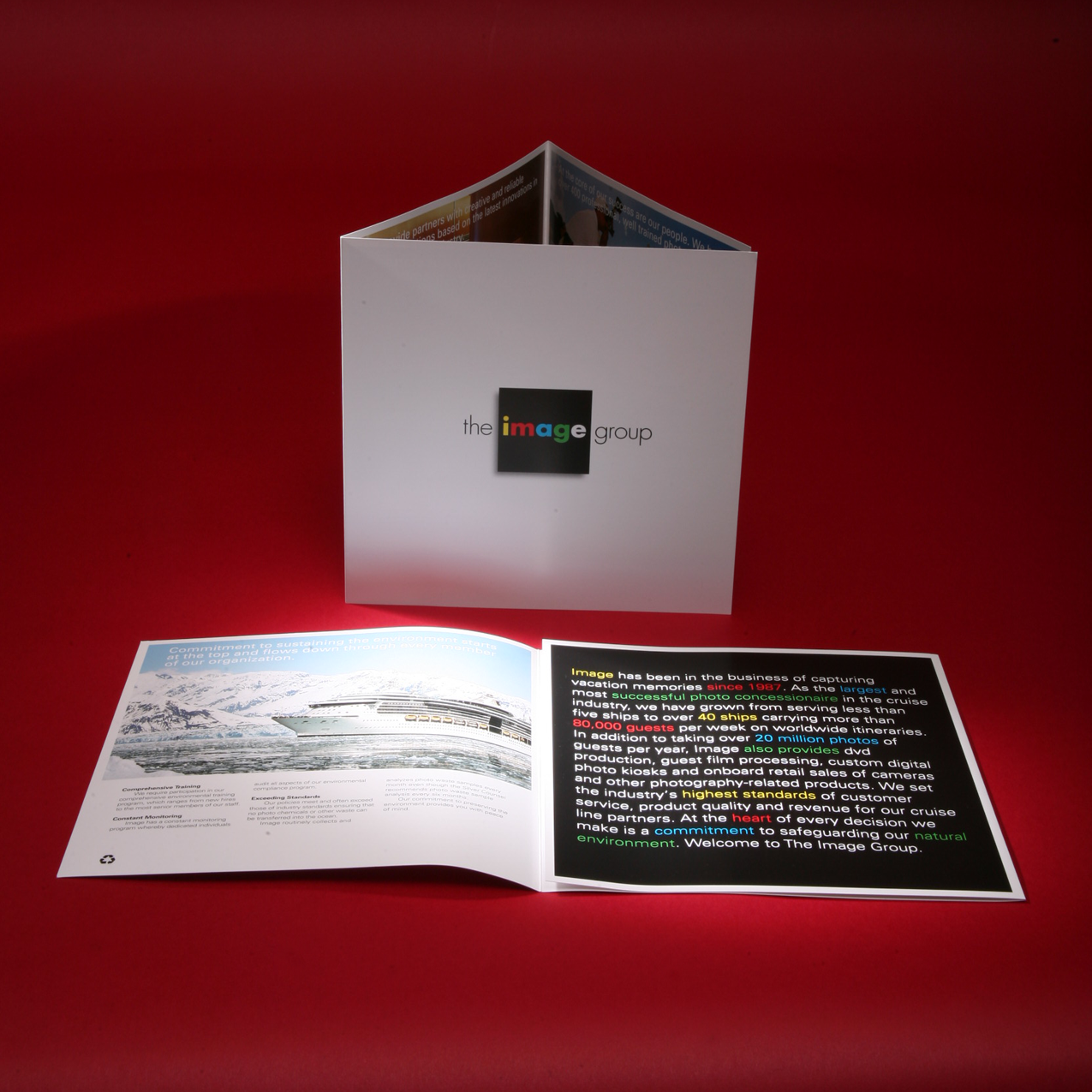8.5” x 11”, June 2018, wrap-around cover, 4-color, perfect-bound, 250 pages
The fifth lessons learned report issued by the Special Inspector General for Afghanistan Reconstruction examines the U.S. counternarcotics effort in Afghanistan, detailing how the Departments of Defense (DOD) and State, the U.S. Agency for International Development (USAID), and the Drug Enforcement Administration (DEA) tried to deter farmers and traffickers from participating in the cultivation and trade of opium, build Afghan government counterdrug capacity, and develop the country’s licit economy.
Photo by AFP, Noorullah Shirzada
8.5” x 11”, May 2018, wrap-around cover, 4-color, perfect-bound, 284 pages
The fourth lessons learned report issued by the Special Inspector General for Afghanistan Reconstruction examines the U.S. stabilization effort in Afghanistan, detailing how the U.S. Agency for International Development and the Departments of State and Defense tried to support and legitimize the Afghan government in contested districts from 2002 through 2017.
Photo by USAID Afghanistan
8.5” x 11”, April 2018, wrap-around cover, 4-color, perfect-bound, 224 pages
The third in a series of lessons learned reports issued by the Special Inspector General for Afghanistan Reconstruction examines how the U.S. government supported private sector development in Afghanistan since 2001 through efforts led by the U.S. Agency for International Development, with additional significant roles played by the Departments of State, Defense, Commerce, and Treasury.
Photo by UNAMA, Fardin Waezi
8.5" x 11", September 2017, wrap-around cover,4-color, perfect-bound, 279 pages
The second in a series of lessons learned reports to be issued by the Special Inspector General for Afghanistan Reconstruction examines how the U.S. government—primarily the Departments of Defense, State, and Justice—developed and executed security sector assistance (SSA) programs to build, train, advise, and equip the Afghan National Defense and Security Forces (ANDSF), both unilaterally and as part of a coalition, from 2002 through 2016.
Photo by DOD, Spc. Ryan DeBooy
April 2016, Brochure
In late 2014, SIGAR initiated its lessons learned program to identify and preserve lessons from the U.S. reconstruction experience and make recommendations to Congress and executive agencies on ways to improve our efforts in Afghanistan, as well as in future operations. SIGAR and the United States Institute of Peace (USIP) convened a conference on April 19-20, 2016, to gather policy makers and experts from major donors in the coalition to share their perspectives and gain insight into ways we can learn from our common reconstruction challenges, and captured it in this brochure.
8.5" x 11", each report is over 200+ pages, 4-color, perfect-bound
The former report (left) was redesigned (right) for a cleaner and simplified look. All reports are found on www.sigar.mil
8.5" x 11", each report is over 200+ pages, 4-color, perfect-bound
All reports are found on www.sigar.mil
The former letterhead (left) was redesigned (right) for a simplified and modern look.
The design of the cover of the brochure was inspired by the geometric ceiling photo. This image was one of my favorite images curated during the whole tour. The mosaic of triangles using colors found in nature emphasized the beauty of the natural elements of this ceiling design.
Art Direction & Design: Olivia Paek, Cover Photography: Chris McNamara
Printed: 4-color, Trim size: 5.5"x8.5", 16 pages
The inspiration for the postcard is from the work of Kazimir Malevich, a forerunner to the modern movement in art and architecture. The tour was on April 30, 2016 and occurs every other year.
Art Direction & Design: Olivia Paek, Photography: Caroline Space
Printed: 4-color, Trim size: 5"x7"
Advertising brochure for the largest photo concessionaire in the cruise industry.
Promotional recipe cards for CayBrew Beer launch party in the Cayman Islands.
Size: 4" x 4" per card, 6 cards total
The client wanted a wedding invitation suite that had a formal yet modern feel with a backdrop of the city they were to be wed. The 3-piece suite was housed in a black trifold envelope with the watercolor image of the reception site as the centerpiece.
The clients wanted to use the colors of their wedding incorporated into their invite. With the wedding in December, the illustration of winter florals was used for the pop of color that would be available for the season.
The clients were having a small and intimate wedding, 30 people, hence the design of the invitation was created with an element of calligraphy and print to have the appearance that they were personally created for each guest.


















